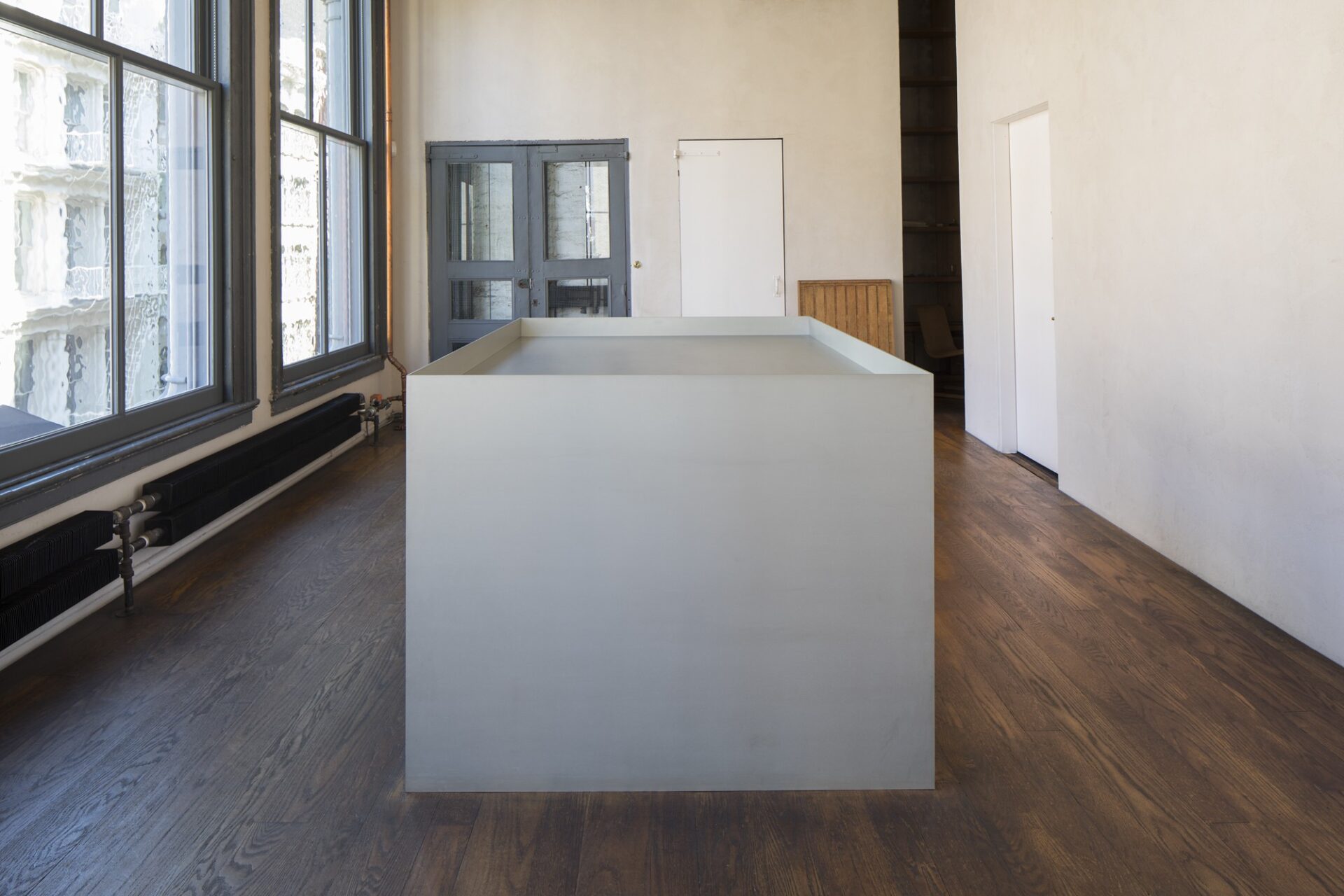Regarding the particularity of the recessed top of this work in anodized aluminum, Donald Judd stated in a circa 1967 interview with art historian Barbara Rose that the depth of the recession “was a delicate calculation,” and that he called the fabricator “at the last minute and told him to put it up a quarter of an inch. He thought I was crazy.”1
Additionally, the recessed top of this work echoes the fifth floor of 101 Spring Street, which has a baseboard made of the same wood as the floor, “making the floor a shallow recessed plane.”2 This form is similar to untitled, 1965, a work in brown enamel and hot-rolled steel that Judd installed in the west building of La Mansana de Chinati/The Block.
This is the first piece of Judd’s in anodized aluminum. Anodizing is an electrochemical finishing process that increases the metal’s resistance to corrosion and wear. It was first used on an industrial scale in 1923 to protect seaplane parts from corrosion.
